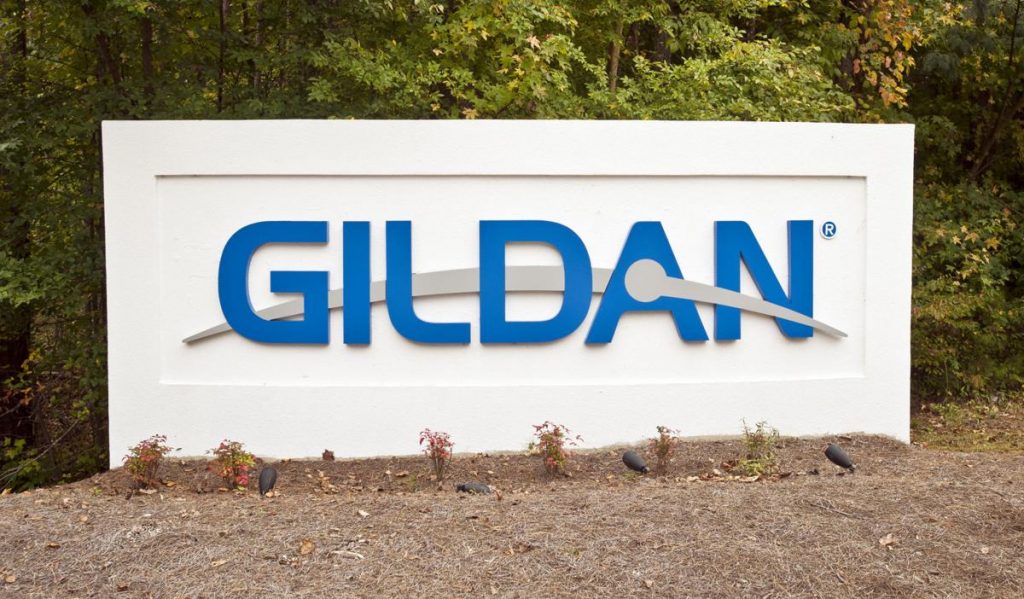By Eric Smith
Labor strikes and political unrest have hindered the movement of goods across and out of Nicaragua, where Gildan Activewear operates three of its 13 sewing facilities, but not even these disruptions could dampen the apparel manufacturer’s second quarter.
Although the company had to absorb additional manufacturing costs from Central American supply chain snarls, Gildan managed to post an earnings gain of 1.2 percent in Q2, as a 6.8 percent sales gain and expense controls offset lower gross margins. The company even slightly raised its outlook for sales and earnings for the year.
Gildan’s supply chain efficiencies and backups prepared the company for any disruption for moving material out of Central America, according to CEO Glenn Chamandy.
“We’ve definitely incurred a little bit higher cost because we’ve been transporting goods, and instead of using the road to get to Nicaragua, we’re going through Costa Rica,” Chamandy said on Thursday’s conference call with analysts. “We pretty have a pretty diverse supply chain. We keep enough flexibility in our supply chain to absorb these types of situation, so it’s really not affecting our ability to service; it’s more affecting a little bit of our cost that’s going to flow through, and it’s minimal in terms of what the actual cost is from the Nicaragua situation. It’s a couple of pennies in Q3.”
Net sales of $764.2 million in the second quarter ended July 1 were up 6.8 percent compared to the prior year, driven by a 17.3 percent increase in activewear sales and beating Wall Street estimates by $35.8 million.
The sales increase in activewear was driven by strong shipments of imprintable products, as well as increased shipments to global lifestyle brand customers and retailers. International sales in the second quarter were up 35.2 percent, reflecting strong growth momentum across all markets. The company’s earnings per share of 52 cents beat estimates by 3 cents per share.
The increase in activewear sales also reflected higher net selling prices, including the impact of foreign exchange and favorable product-mix driven by strong double digit growth in fleece shipments and growth in fashion basics. The hosiery and underwear category declined 23.8 percent during the quarter, mainly due to the unit volume decline in socks at mass retailers, which are shifting emphasis toward their own private label brands, and lower licensed and Gold Toe brand sales. In addition, underwear shipments were down on a year-over-year basis for the quarter, primarily due to the non-recurrence of shipments related to the initial fill of expanded space gains in the prior year.
The performance sparked Jim Duffy of Stifel to write in a note to investors: “2Q upside and more optimistic guidance are bringing relief to shares after weeks of concern around manufacturing disruption in Nicaragua and higher cotton costs. Breakout strength in Activewear is helping the company overcome intensifying challenges in Hosiery and Underwear. We continue to see value in Gildan infrastructure and cost advantage.”
The company projects some inflationary costs and continued impact of the aforementioned supply chain disruptions, which Gildan expects to result in a roughly 8 cent negative headwind.
“Most of this is being driven as we respond to growth,” CFO Rhodri Harris said on Thursday’s conference call. “And as we move through the year, as we’ve upped our overall view of growth. And then obviously you got all that good SG&A reduction is also coming through. So, I think we feel very good really about the way our margins are evolving, again, as we respond to the environment and we drive for that growth.
The company updated full year 2018 financial guidance and is now projecting adjusted diluted EPS to be in the range of $1.85 to $1.90 compared to previous guidance of $1.80 to $1.90. Net sales growth is now projected to be in the mid-single-digit range, the upper end of the company’s previous range of low-to-mid-single-digit growth. The company expects adjusted EBITDA to be in the range of $605 to $620 million compared to $595 to $620 million previously, and free cash flow for 2018 is now expected to be in excess of $425 million for the year, higher than the company’s previous estimate of in excess of $400 million. Guidance for capital expenditures remains at approximately $125 million for 2018.
“Sales growth combined with SG&A leverage and the benefit of a lower share count translated to higher-than-anticipated EPS growth in the quarter, even after absorbing higher raw material and other import costs, as well as the impact of some supply chain headwinds which we have been managing through well,” Harris said. “More importantly, our year-to-date financial performance gives us increased confidence that we will be able to deliver mid-single-digit sales growth for the full year and the higher end of our EPS guidance range.”
[author] [author_image timthumb=’on’]https://s.gravatar.com/avatar/dec6c8d990a5a173d9ae43e334e44145?s=80[/author_image] [author_info]Eric Smith is Senior Business Editor at SGB Media. Reach him at eric@sgbonline.com or 303-578-7008. Follow on Twitter or connect on LinkedIn.[/author_info] [/author]
















